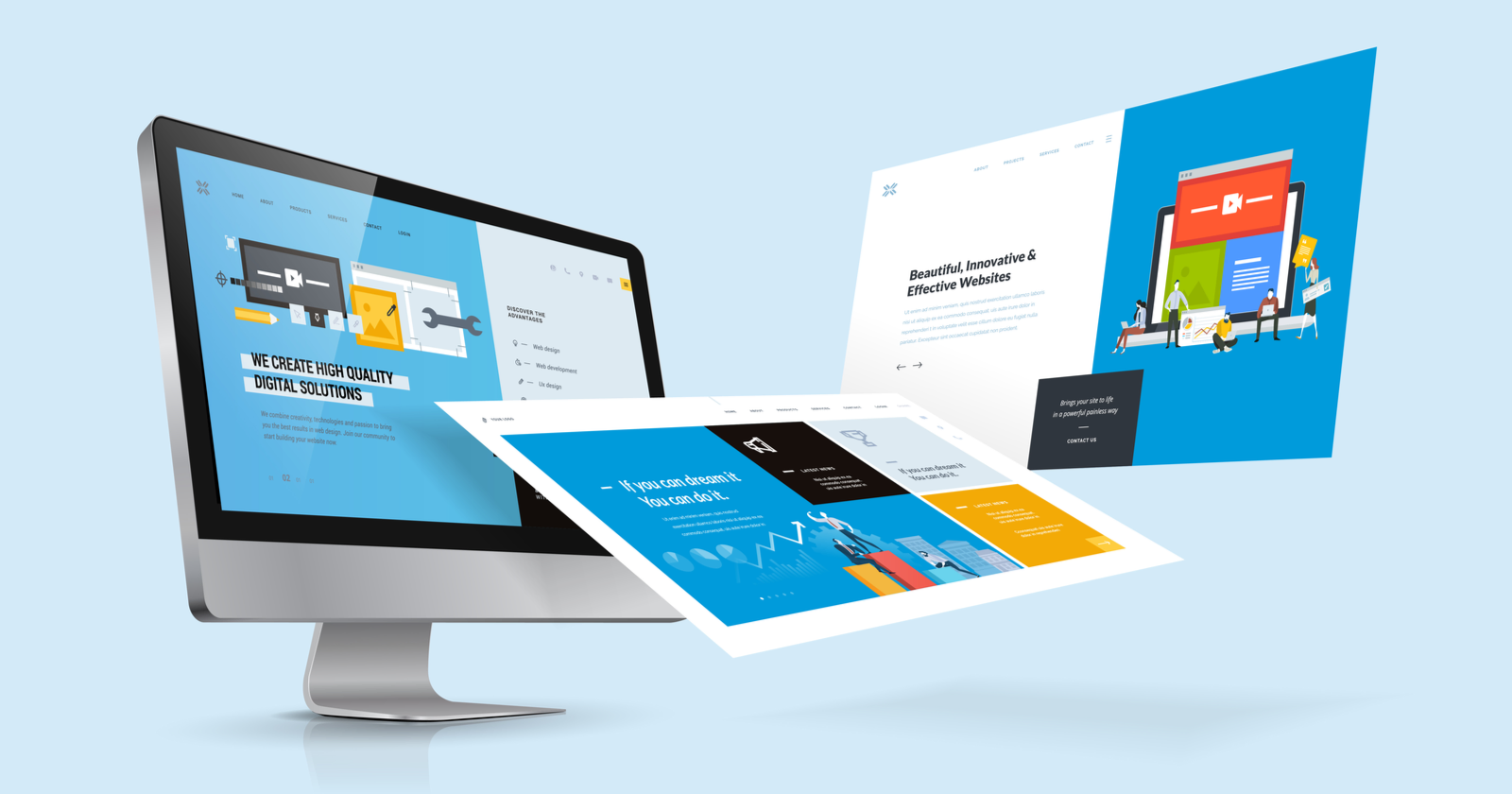The Most Effective Types of Website Design to Enhance Customer Experience and Engagement
In the ever-evolving landscape of digital interaction, the performance of Web style dramatically influences individual experience and involvement. Different layout strategies, such as minimalist, responsive, and interactive layouts, each offer distinct benefits that can provide to varied user needs.
Minimal Website Design
As electronic landscapes become increasingly cluttered, minimalist Web design has actually arised as an effective method to boosting user experience. This layout philosophy prioritizes simpleness, focusing on crucial aspects while getting rid of unneeded disturbances. By utilizing ample white room, straightforward navigating, and a minimal color scheme, minimalist style cultivates quality and routes customer interest to crucial web content.
The core principle of minimalist Web design is to produce a smooth interaction for users. By minimizing cognitive lots, users can promptly understand details without really feeling bewildered. This straight method not just enhances functionality but also urges involvement, as site visitors are extra most likely to explore a site that is visually enticing and very easy to navigate.
Additionally, minimal design usually stresses typography and images, using these aspects purposefully to convey messages properly. This concentrate on important elements can improve brand name identification and produce a memorable customer experience. Essentially, minimal Web design is not just a trend; it is a thoughtful technique that identifies the significance of user-centered style. By removing away supplementary aspects, developers can produce a much more engaging, reliable, and enjoyable Web experience for all users.
Receptive Website Design
In today's varied electronic environment, receptive website design has actually ended up being crucial for creating a seamless individual experience throughout a wide variety of tools. As customers accessibility websites on mobile phones, tablets, desktops, and laptops, the ability of a web site to adjust its format and content to various display sizes and resolutions is important.
Receptive website design utilizes flexible grids, images, and CSS media questions to guarantee that Web material is presented efficiently, no matter the device utilized. This method not just enhances the aesthetic allure of a site yet additionally significantly boosts use. Individuals are most likely to engage with a website that uses a constant experience, as it eliminates the disappointment of having to zoom in or scroll excessively.
Moreover, search engines, consisting of Google, prioritize mobile-friendly sites in search rankings. By taking on responsive design, services can boost their presence and get to a broader target market. This strategy likewise simplifies site maintenance, as a solitary variation of the website can accommodate all gadgets, decreasing the requirement for multiple variations. In recap, responsive website design is a fundamental method that improves customer experience, involvement, and total complete satisfaction.
Interactive Website Design
Responsive website design prepares for enhancing user experience, however interactive website design takes this an action additionally by involving users in a much more vibrant method - Aligned Position Web Design. By including elements such as computer animations, clickable models, and real-time responses, interactive Web layout mesmerizes customers, attracting them into a richer surfing experience
This method not only cultivates engagement however also motivates users to check out material actively as opposed to passively eating it. Strategies such as gamification, where individuals make incentives for finishing jobs, can considerably boost the moment spent on a website and boost total fulfillment. Additionally, interactive attributes can simplify complicated details, making it more digestible and delightful.

Including interactive style components can likewise cause higher conversion rates, as users are more likely to engage with a site that actively includes them. Aligned Position Web Design. Ultimately, interactive Web style changes user experiences right into unforgettable trips, making sure that site visitors return time after time
Apartment Design
Characterized by its minimalistic technique, level style emphasizes simplicity and functionality, removing unneeded aspects and concentrating on important attributes. This design ideology prioritizes usability, ensuring that individuals can navigate user interfaces effortlessly and efficiency. By employing a tidy visual, flat layout gets rid of the clutter frequently located in much more luxuriant designs, therefore improving individual page concentrate on material and performance.
The trademark of flat design depends on its usage of bold colors, basic typography, and geometric shapes. These aspects add to a visually appealing interface that is both friendly and modern-day. Furthermore, flat layout cultivates a feeling of clearness, enabling customers to discern essential activities and information without diversion.
Furthermore, level layout is especially effective in responsive Web layout, as its simplicity equates well throughout different tools and screen sizes. The absence of detailed textures and gradients minimizes packing times, which is crucial for maintaining customer involvement. As digital landscapes remain to evolve, flat style stays an appropriate choice for producing easy to use internet sites that improve overall experience. By concentrating on essential functions, level design not only meets customer needs but additionally encourages smooth communication, making it a crucial element of reliable Web layout methods.
Adaptive Web Style
Adaptive website design personalizes the individual experience by developing several taken care of layouts tailored visit this site right here to different screen dimensions and devices. Unlike receptive layout, which fluidly adjusts a solitary format, flexible style uses distinct designs for specific breakpoints, making certain ideal presentation on numerous systems. This method allows designers to focus on the special attributes of each tool, boosting use by providing exactly what users require based upon their context.
One of the main benefits of flexible Web design is its capacity to optimize lots times and performance. By offering tailored content and photos that fit the customer's tool, websites can minimize information usage and boost loading speeds. This is especially helpful for users with slower connections or limited data plans.

Furthermore, flexible layout assists in a much more controlled and constant branding experience. Because developers create multiple layouts, they can guarantee that the aesthetic components line up with the brand's identification throughout different systems - Aligned Position Web Design. This causes a cohesive customer experience, boosting interaction and advertising individual retention
Conclusion
Minimal layout fosters quality and focus, while receptive style makes sure adaptability across different devices, promoting ease of access. Jointly, these design comes close to add to the creation of user-friendly environments that not only enhance complete satisfaction but additionally drive greater conversion prices, emphasizing their essential value in modern Web design strategies.

Minimal design cultivates clearness and focus, while receptive layout ensures versatility across numerous gadgets, advertising access. Collectively, these design comes close to add to the creation of easy to use environments that not only enhance fulfillment however likewise drive higher conversion prices, emphasizing their critical significance in contemporary Web design approaches.